When we think of dinosaurs, images of towering creatures roaming prehistoric landscapes often come to mind. Yet these magnificent animals, like modern birds and reptiles, had to reproduce and protect their eggs from predators and environmental challenges. The nesting behaviors of dinosaurs reveal fascinating insights into their lives and evolutionary connections to modern species. Recent paleontological discoveries have dramatically expanded our understanding of dinosaur reproduction, showing sophisticated nesting strategies that varied significantly across different dinosaur groups. From carefully constructed ground nests to potential arboreal nesting sites, dinosaurs displayed remarkable diversity in their approaches to egg-laying and offspring protection. This article explores the evidence for different dinosaur nesting behaviors and what they tell us about these ancient creatures.
The Fossil Record of Dinosaur Nests

Dinosaur nests represent some of the most informative fossils for understanding prehistoric parental behavior. Unlike isolated bones, nests provide a snapshot of reproductive strategies and family life. The fossil record includes numerous examples of ground nests, many containing clutches of eggs arranged in circular or spiral patterns. The Gobi Desert, Montana’s Two Medicine Formation, and Argentina’s Auca Mahuevo site have yielded particularly well-preserved nesting sites. These discoveries frequently include not just the nest structures themselves but sometimes embryonic remains within eggs, adult specimens nearby, and even evidence of multiple generations using the same nesting grounds. The preservation of these delicate structures often required rapid burial under sediment, usually from flooding events or windblown sand, creating natural time capsules of dinosaur family life.
Ground Nesting: The Most Common Strategy

The majority of discovered dinosaur nests were constructed on the ground, similar to many modern reptiles and ground-nesting birds. Large sauropods like Titanosaurs created shallow depressions in the earth where they laid their eggs in careful arrangements. Hadrosaurs (duck-billed dinosaurs) formed mound-like structures using surrounding vegetation. Theropods, including the ancestors of modern birds, often created simple circular nests where eggs were partially buried. Ground nesting offered several advantages, including stability, temperature regulation through soil contact, and accessibility for larger dinosaur species that couldn’t climb trees. These ground nests weren’t haphazard constructions but carefully designed structures tailored to the specific needs of different dinosaur groups, with variations in depth, arrangement, and substrate selection indicating sophisticated nesting behaviors.
Evidence for Underground Nesting

Some dinosaur species appear to have taken ground nesting a step further by creating underground chambers for their eggs. The most compelling evidence comes from certain ornithopod species, whose nests show signs of having been excavated below the surface. Maiasaura, a duck-billed dinosaur from North America, may have partially buried its eggs in soil and vegetation mounds, creating a semi-underground environment. The small ceratopsian Protoceratops left nests in Mongolia that suggest the eggs were laid in shallow pits and then covered. Underground or partially buried nests offered superior temperature stability and protection from both predators and harsh weather conditions. The moisture levels in such environments also helped prevent eggs from drying out, a critical factor in embryonic development. These underground nesting behaviors parallel those seen in modern crocodilians and some turtle species, suggesting convergent evolution of effective reproductive strategies.
The Case for Arboreal Nesting

The possibility that some dinosaurs nested in trees represents one of the more intriguing areas of paleontological debate. While direct evidence remains limited, certain small theropods—especially those closely related to the evolutionary line that produced birds—possessed physical adaptations that would have made tree climbing possible. The discovery of feathered dinosaurs like Microraptor, with features suggesting an arboreal lifestyle, has strengthened the case that some species might have nested above ground. The evolutionary transition from ground to tree nesting would represent a significant adaptation, potentially driven by predator avoidance. Small, lightweight theropods with grasping hands and feet would have been the most likely candidates for this behavior. However, the perishable nature of tree nests makes their preservation in the fossil record extremely unlikely, leaving researchers to rely on indirect evidence and evolutionary comparisons with modern birds.
Oviraptor: Misunderstood Nest Protector

One of paleontology’s most famous misinterpretations involves Oviraptor, whose name ironically means “egg thief.” When first discovered in Mongolia in 1924, an Oviraptor skeleton was found atop what appeared to be Protoceratops eggs, leading scientists to conclude it had been caught in the act of stealing them. Decades later, further discoveries revealed these were actually Oviraptor’s own eggs, and the animal had died while protecting or incubating its nest. This ground-nesting theropod arranged its eggs in concentric circles with the narrow ends pointing inward, similar to modern birds. The discovery of multiple Oviraptor specimens in brooding positions over their nests provides some of the strongest evidence for parental care among dinosaurs. These nests were open to the air rather than buried, suggesting the parents played an active role in egg incubation and protection, much like modern birds.
Titanosaur Nesting Colonies
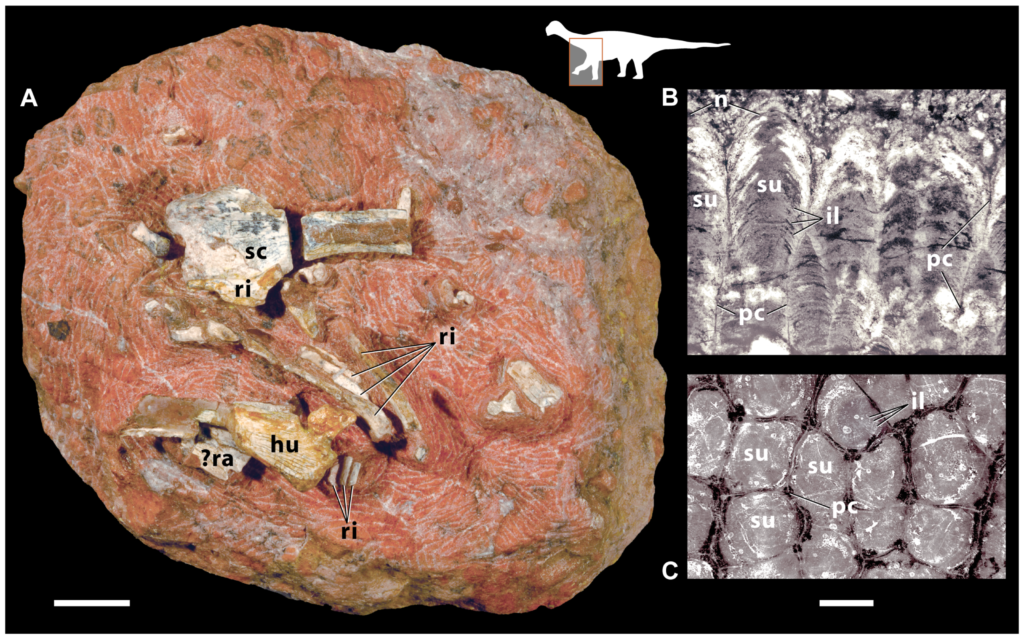
Among the most spectacular dinosaur nesting discoveries are the massive sauropod nesting grounds found in Argentina, India, and Spain. These sites contain hundreds of nests from titanosaurs—the largest creatures to ever walk the earth—arranged in distinct patterns suggesting organized colony nesting. Each nest typically contained 15-40 spherical eggs laid in depressions dug into the ground. The eggs were arranged in rows or circles, partially buried in substrate that likely helped maintain optimal incubation temperatures. These massive dinosaurs, weighing up to 70 tons, couldn’t physically sit on their nests without crushing the eggs, suggesting they relied on environmental heat and possibly rotting vegetation to incubate their clutches. The colonial arrangement of these nests mirrors behaviors seen in modern sea turtles and some bird species, providing protection through numbers and suggesting complex social structures among these giants.
Nest Architecture and Construction Techniques

Dinosaur nests display remarkable architectural diversity, reflecting the different needs and capabilities of various species. Hadrosaurs like Maiasaura created large mound nests reaching up to three meters in diameter, incorporating surrounding vegetation that may have provided heat through decomposition. Theropod nests were typically more compact and precisely arranged, with eggs often positioned in spiral patterns that maximized space and heat distribution. Some troodontid dinosaurs created nests with partial coverings, the eggs arranged with their narrow ends pointing downward into the substrate. The construction techniques varied from simple scrapes in the earth to complex excavated chambers with multiple layers. In some cases, nest materials appear to have been carefully selected, with certain sediment types preferred over others, suggesting dinosaurs were discerning builders who understood the requirements for successful egg incubation and development.
Temperature Regulation in Dinosaur Nests

One of the most critical functions of any nest is maintaining optimal temperature for embryonic development, and dinosaurs evolved various strategies to accomplish this. Ground nests benefited from the earth’s natural insulation properties, with soil buffering against temperature extremes. Some species likely relied on microbial decomposition of vegetation in their nests to generate heat, similar to modern crocodiles and megapode birds. Partially buried eggs would have experienced more stable temperatures than fully exposed ones. Recent studies using advanced scanning techniques have revealed the porosity patterns in dinosaur eggshells, indicating adaptation to specific nest humidity and temperature conditions. The orientation of eggs within nests also played a role in temperature regulation, with many species positioning eggs to optimize heat distribution from the environment or from a brooding parent. These sophisticated temperature regulation strategies suggest dinosaurs had evolved complex reproductive behaviors long before the emergence of modern birds.
Parental Care and Nest Attendance
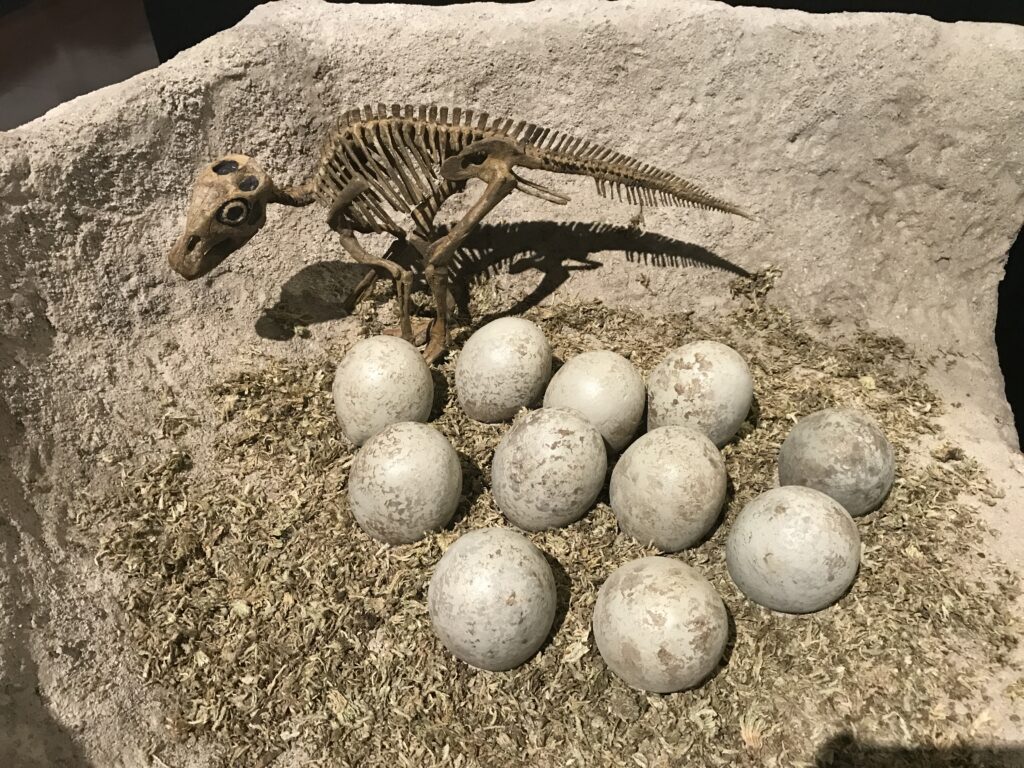
The discovery of adult dinosaurs preserved atop their nests has revolutionized our understanding of dinosaur parenting behaviors. Citipati, a close relative of Oviraptor, has been found in a bird-like brooding posture with its arms spread over its eggs, demonstrating that at least some theropods provided direct parental care. Maiasaura, whose name means “good mother lizard,” appears to have returned to its nests to care for hatchlings, as evidenced by the remains of nestlings at different growth stages found within a single nest. For ground-nesting species, parental attendance would have been essential for protecting eggs from predators. The level of parental investment varied considerably across dinosaur groups, with some species likely abandoning their eggs after laying, while others maintained extended periods of nest attendance. This diversity of parenting strategies parallels what we see in modern reptiles and birds, suggesting that intensive parental care evolved gradually along the dinosaur-bird lineage.
Environmental Factors Influencing Nest Type

The choice between underground, ground-level, or potentially arboreal nesting would have been heavily influenced by environmental conditions. In arid environments like the Gobi Desert, where many dinosaur nests have been discovered, underground or partially buried nests would have protected eggs from extreme temperature fluctuations and desiccation. Dinosaurs living in flood-prone areas may have selected elevated nesting sites to protect their clutches from rising water. Predation pressure would have been another crucial factor, with smaller dinosaurs potentially seeking the protection of tree nests or hidden underground chambers to evade egg-eaters. Climate also played a role in determining incubation strategies, with dinosaurs in cooler regions potentially relying more heavily on parental body heat or decomposing vegetation. These environmental adaptations demonstrate the remarkable ecological flexibility of dinosaurs, allowing them to successfully reproduce across the diverse landscapes of the Mesozoic world.
Modern Analogues: Birds and Reptiles
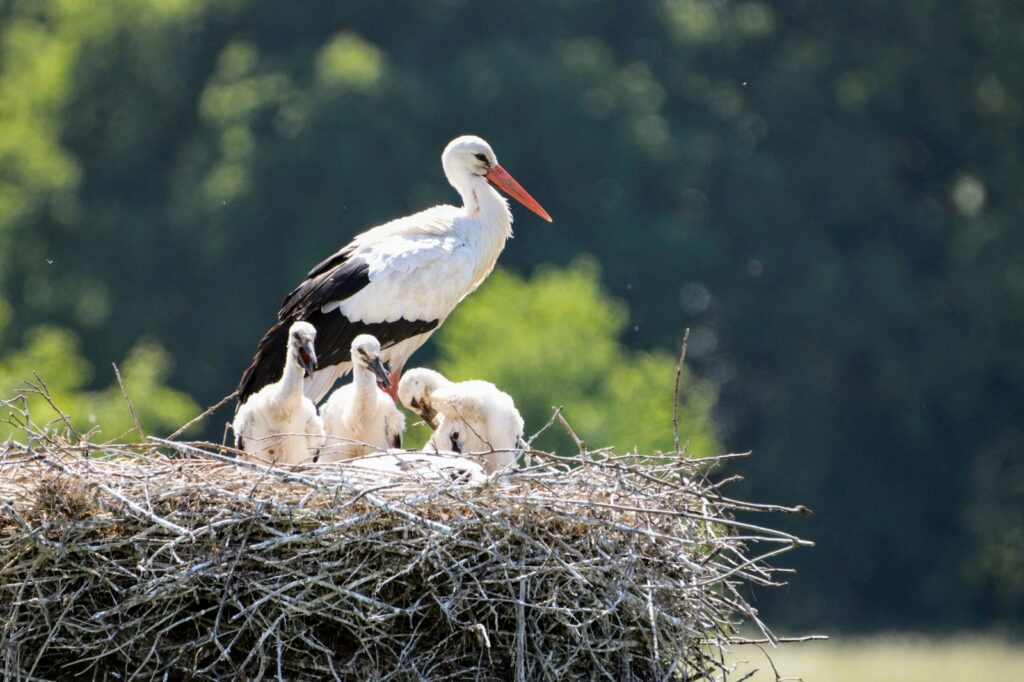
Studying the nesting behaviors of modern animals provides valuable insights into possible dinosaur strategies. Today’s birds, as direct descendants of theropod dinosaurs, exhibit tremendous diversity in nest construction, from simple ground scrapes to elaborate tree nests and burrows. Megapode birds of Australia and Southeast Asia build large mounds of decaying vegetation that generate heat for egg incubation, potentially similar to some dinosaur techniques. Modern crocodilians dig holes or mounds for their eggs, with nest type varying by species and habitat. Marine iguanas and many turtle species bury their eggs in underground chambers, protecting them from predators and providing stable temperatures. The diversity seen in living reptiles and birds suggests that dinosaurs likely employed a similarly wide range of nesting strategies adapted to their body sizes, habitats, and predator pressures. By examining these modern analogues, paleontologists can develop testable hypotheses about dinosaur reproductive behaviors that might otherwise remain speculative.
Challenges in Interpreting Dinosaur Nesting Behavior
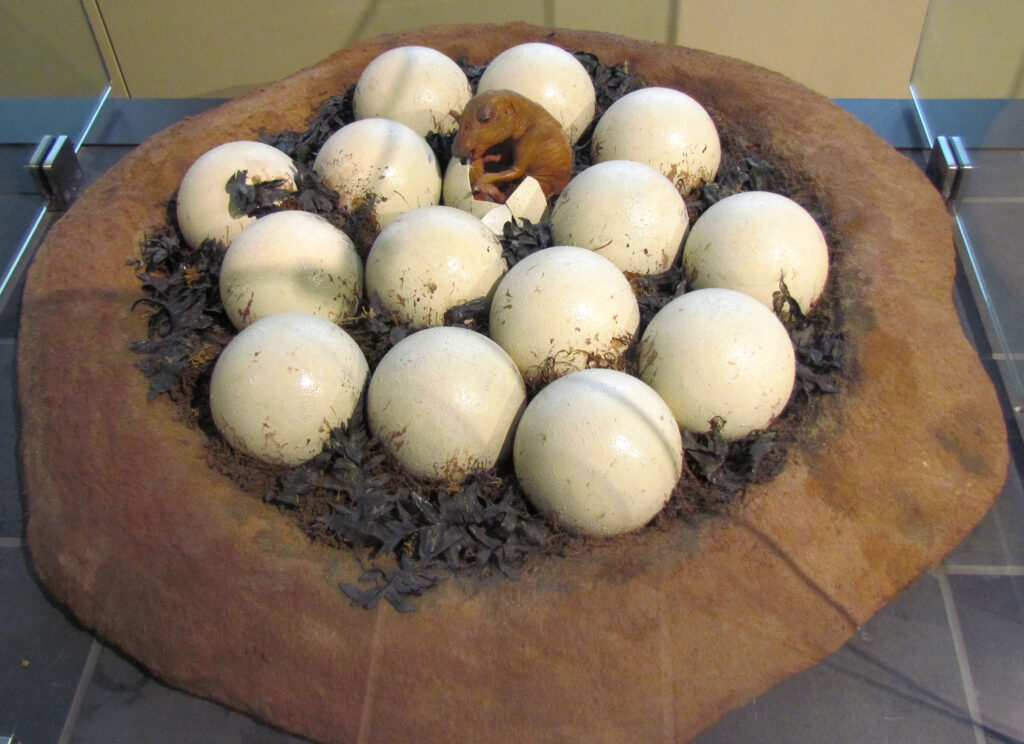
Despite significant advances in our understanding, reconstructing dinosaur nesting behavior faces substantial challenges. The fossil record is inherently incomplete, with preservation biases favoring certain environments and nest types over others. Tree nests, if they existed, would have had virtually no chance of fossilization, creating a significant blind spot in our knowledge. Distinguishing between eggs that were deliberately buried and those that became buried through natural taphonomic processes can be difficult. Identifying which dinosaur species created a particular nest often relies on circumstantial evidence unless embryonic remains are present within the eggs. Climate reconstructions for specific nesting sites involve uncertainties that affect interpretations of incubation strategies. Additionally, behaviors don’t fossilize directly, forcing paleontologists to infer behaviors from physical evidence and comparisons with modern animals. These limitations require scientists to maintain appropriate levels of certainty in their conclusions while continuing to develop new techniques to extract maximum information from available fossils.
Future Directions in Dinosaur Nest Research

The field of dinosaur reproductive biology continues to advance through new technologies and discoveries. Advanced imaging techniques now allow researchers to examine the microstructure of fossil eggs and nests without destructive sampling, revealing details about incubation conditions and embryonic development. Chemical analyses of nesting sites can provide insights into ancient soil conditions and potential nest materials. The growing fossil record from previously underexplored regions like China, Argentina, and Mongolia continues to yield new nesting sites that expand our understanding of dinosaur diversity. Computer modeling of nest conditions based on climate reconstructions helps test hypotheses about incubation strategies. Comparative studies with living birds and reptiles offer frameworks for interpreting fossil evidence in evolutionary context. As these research avenues develop, our picture of dinosaur reproductive behavior becomes increasingly nuanced, revealing sophisticated adaptations that helped these animals dominate terrestrial ecosystems for over 160 million years.
Conclusion: Diversity in Dinosaur Nesting Strategies
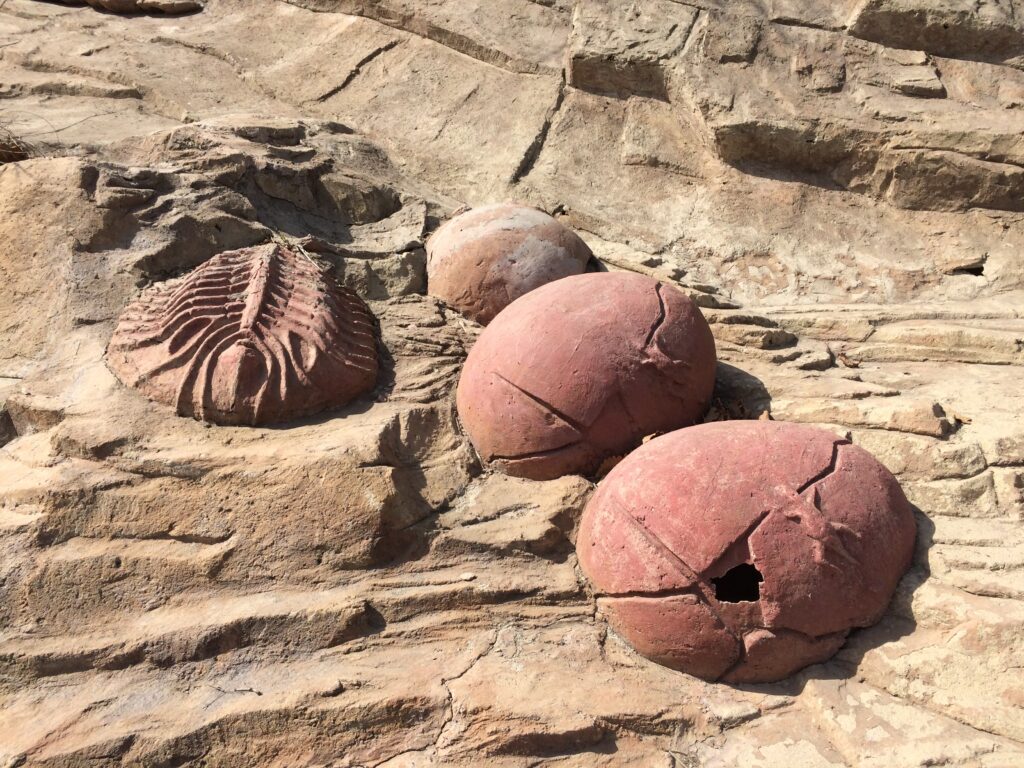
The evidence clearly indicates that dinosaurs employed diverse nesting strategies adapted to their physical characteristics, habitats, and ecological niches. While ground nesting appears to have been the dominant approach across many dinosaur groups, some species created underground or partially buried nests, and the possibility remains that smaller, bird-like dinosaurs may have constructed nests in trees. This diversity parallels what we observe in modern reptiles and birds, suggesting evolutionary continuity in reproductive strategies. Far from being simple or primitive, dinosaur nests reveal sophisticated behaviors including site selection, architectural design, temperature regulation, and parental care. The transition from predominantly ground-based nesting to the arboreal nests of many modern birds represents one of evolution’s fascinating stories, with its origins in the Mesozoic era. As research continues, our understanding of dinosaur reproduction will undoubtedly deepen, further illuminating the complex lives of these extraordinary animals that dominated Earth for so long before passing their legacy to the birds that still share our world today.



